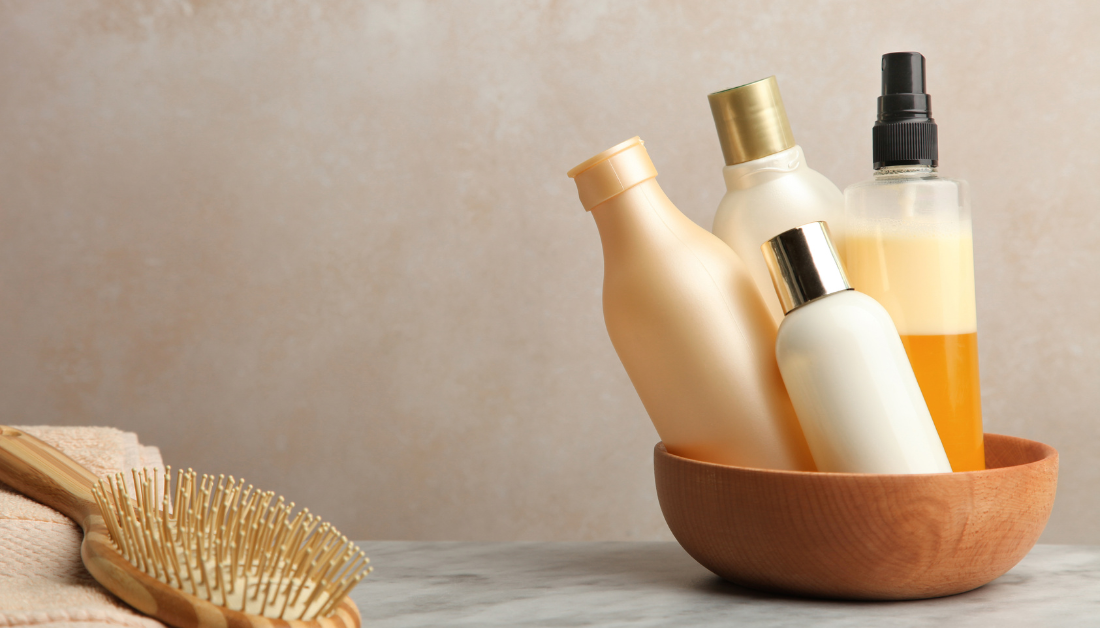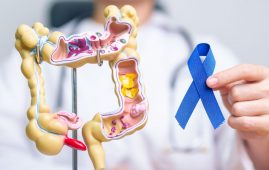

According to Purdue University researchers, the normal morning routine for many Americans includes inhaling several milligrams of pollutants that may be hazardous to their health. Nusrat Jung, an assistant professor in the Lyles School of Civil Engineering, discovered that several chemicals, particularly cyclic volatile methyl siloxanes, which are ubiquitous in hair care products, linger in the air after use in a newly published paper in Environmental Science & Technology, a journal of the American Chemical Society (ACS). According to Jung’s team, a person can inhale a total of 1-17 milligrams of potentially dangerous compounds in a single home hair care session.
“We found the results to be extremely alarming,” Jung said. “We did not expect to see such significant emissions of volatile chemical mixtures from off-the-shelf hair care products during typical hair care routines that many people perform each and every day.”
According to Jung, the most common — and most alarming — chemical inhaled is decamethylcyclopentasiloxane (called D5 siloxane). It is an organosilicon chemical that is frequently mentioned first or second on the ingredient lists of many hair care products, indicating that it is one of the most plentiful constituents. Because of its low surface tension, inertness, high heat stability, and smooth texture, it has been a common ingredient in many personal care products over the last few decades.
“D5 siloxane has been found to lead to adverse effects on the respiratory tract, liver and nervous system of laboratory animals,” Jung said. “The use of the chemical in wash-off cosmetic products has already been restricted in the European Union because of this. Many of these products are scented, too, and some of the chemicals used to make these fragrances are potentially dangerous to inhale as well.”
According to the European Chemicals Agency, D5 siloxane is classified as “very persistent, very bioaccumulative.” And while the test results on laboratory animals is already concerning, Jung said, there is little information on its human impact.
There has not been much in-depth research into this, so we really have no idea to what extent the threat these chemicals pose when inhaled over a long period of time There have been tests into ‘wash-off’ products like shampoos, but almost none for ‘leave-on’ products like hair gels, oils, creams, waxes and sprays.”
Nusrat Jung, Assistant Professor, Lyles School of Civil Engineering
According to Jung’s research, using high heat on these chemicals, such as curling irons and hair straighteners, serves to further release the toxins into the air. When exposed to temperatures of 210 degrees Celsius, researchers discovered that chemical emissions from hair care products increased by 50% to 310%.
To make matters worse, these airborne pollutants do not stay in a single room — or even the home, according to Jung.
“Home ventilation is likely a major pathway of indoor-to-outdoor siloxane transport,” Jung said. “In urban environments, this is especially significant as you will have hundreds — even thousands — of homes ventilating out potentially harmful chemicals into the urban atmosphere all in a short span of time as people get ready for work and school in the morning. These chemicals are then collectively piped back into buildings through ventilation systems once more. So even if using products with harmful chemicals is not part of your hair care routine, you will still be impacted due to your surroundings in an urban environment.”
According to Jung’s research, surveys of different population groups show that 16% to 70% of participants use leave-on hair care or hair styling products. Based on hair care product usage surveys, an average use frequency of two to five times per week, and assuming that 10% of leave-on hair care products are siloxane-based, total indoor-to-outdoor D5 emissions in the United States could range from 0.4 to 6 metric tons per year.
So, how can people protect themselves from inhaling these chemicals?
“The best solution is to simply not use these products,” Jung said. “I used to use similar products myself to straighten my hair, but after we analyzed the data, it became immediately clear that the best thing I could do to protect my own health was to stop using them.”
If these materials must be used, the next best option is to have an exhaust fan working to reduce the amount of chemicals inhaled, according to Jinglin Jiang, a Purdue civil engineering PhD student and researcher.
“Ventilation can be an effective way to reduce siloxane exposures during indoor hair care routines,” Jiang said. “Our model shows that turning on the bathroom exhaust fan can reduce D5 inhalation exposures by over 90%.”
This, however, contributes to the environmental impact. According to Jung’s research, the cumulative indoor-to-outdoor D5 emission with the exhaust fan always off reaches 710 milligrams in three hours, but the cumulative indoor-to-outdoor D5 emission with the exhaust fan always on reaches 900 milligrams in one hour.
“There’s a good reason why these chemicals are restricted from being used in wash-off hair care products in certain parts of the world,” Jung said. “The effects on people and the planet need to be studied further and regulatory action needs to be taken.”
Data
Jung’s experimental study was carried out at the Purdue zero Energy Design Guidance for Engineers (zEDGE) Tiny House, a home architectural engineering laboratory that she designed.
zEDGE is a single-zone mechanically ventilated residential building with a conditioned interior. Jung’s team employed a cutting-edge proton-transfer-reaction time-of-flight mass spectrometer (PTR-TOF-MS) to measure D5 siloxanes and other volatile compounds in the indoor air in real time, second by second.
The hair care routine emission experiments were carried out over several months during a measurement campaign in zEDGE, and included three types of experiments: realistic hair care experiments that replicate actual hair care routines in the home environment, hot plate emission experiments that investigate the relationship between the temperature of the hair care tools and volatile organic compound emissions, and surface area emission experiments that investigate how hair care tools emit volatile organic compound emissions.
Participants were required to bring their own hair care products and hair styling accessories to recreate their routines in zEDGE for the realistic hair care routine emission trials. Participants were told to divide their hair into four parts prior to each trial. Each participant’s hair was classified as long (below the shoulder) or short (above the shoulder). Each experiment had four phases in order to imitate a real-life schedule.
Following hair styling, participants had two minutes to gather their equipment and leave zEDGE; this was followed by a 60-minute concentration decay period during which zEDGE was unoccupied and the high-resolution PTR-TOF-MS observed the decay in indoor volatile organic compound concentrations. The studies and subsequent analysis concentrated on the concentrations and emissions of indoor volatile organic compounds during and after active hair care routine periods.
Purdue University, the Alfred P. Sloan Foundation, and the National Science Foundation financed and supported this research. Jung’s team intends to look into the numerous other compounds found in these studies but not disclosed in this study.
more recommended stories
 Brain’s Biological Age Emerges as Key Health Risk Indicator
Brain’s Biological Age Emerges as Key Health Risk IndicatorClinical Significance of Brain Age in.
 Children’s Health in the United States is Declining!
Children’s Health in the United States is Declining!Summary: A comprehensive analysis of U.S..
 Emotional Processing for Chronic Pain Relief
Emotional Processing for Chronic Pain ReliefA groundbreaking clinical trial led by.
 Egg White Proteins for Hypertension
Egg White Proteins for HypertensionEgg white proteins for hypertension have.
 Limited Health Care Access During Disasters Delays Colorectal Cancer Diagnoses
Limited Health Care Access During Disasters Delays Colorectal Cancer DiagnosesNatural disasters like Hurricanes Irma and.
 Ethical Issues in Human-AI Relationships
Ethical Issues in Human-AI RelationshipsAs artificial intelligence becomes increasingly lifelike.
 Vegetarian Diets and Healthy Aging: Does Diet Quality Make a Difference?
Vegetarian Diets and Healthy Aging: Does Diet Quality Make a Difference?Vegetarian diets are widely recognized for.
 Mental Health Pros May Miss Bulimia Signs – Here’s Why
Mental Health Pros May Miss Bulimia Signs – Here’s WhyA recent study by the University.
 New Study Questions Fluid Restriction in Heart Failure Management
New Study Questions Fluid Restriction in Heart Failure ManagementA groundbreaking study presented at the.
 Machine Learning Predicts Early Mortality in IBD Patients
Machine Learning Predicts Early Mortality in IBD PatientsA groundbreaking study published in the.

Leave a Comment